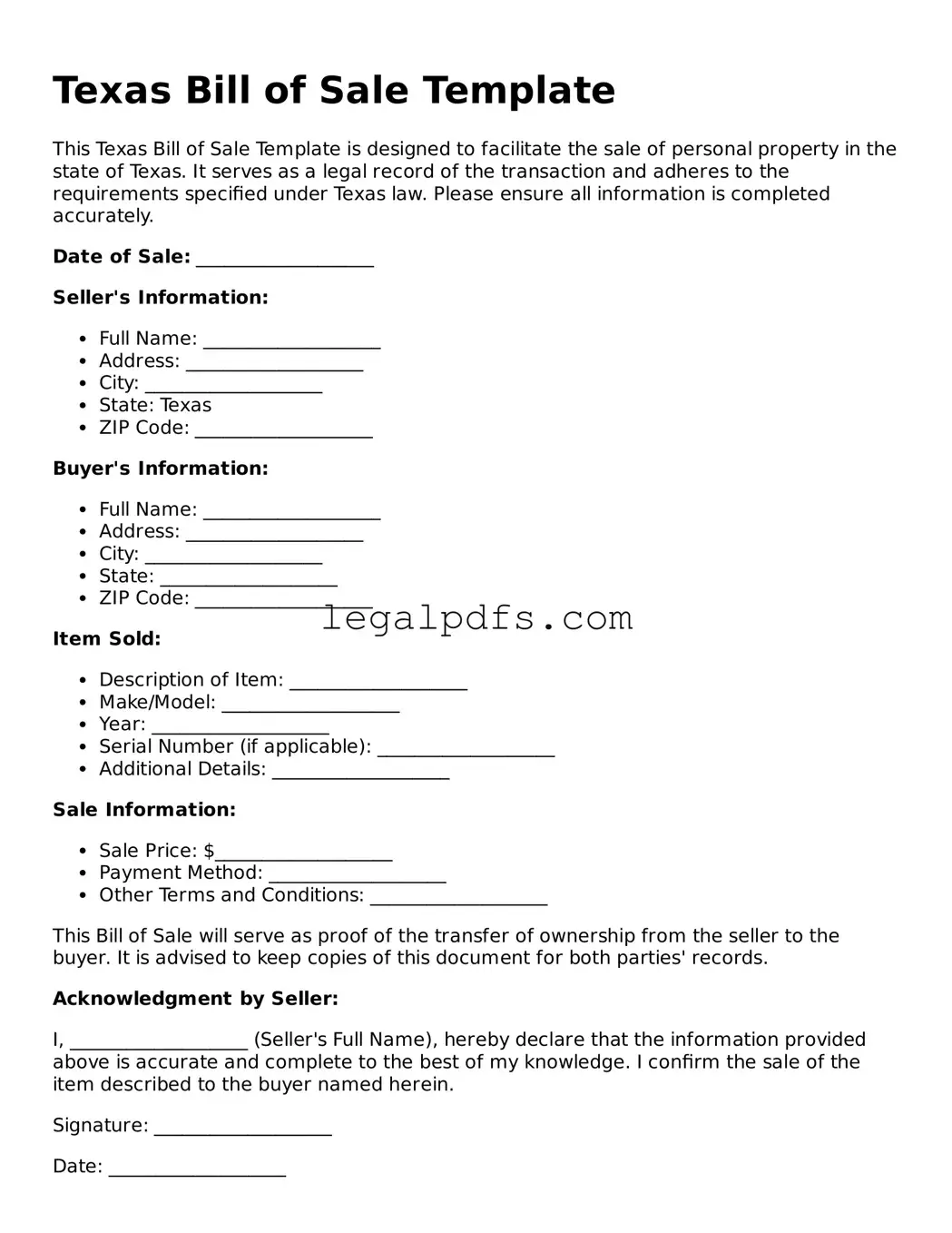What is a Texas Bill of Sale form?
A Texas Bill of Sale form is a legal document that records the transfer of ownership of an item from a seller to a buyer. It serves as proof of purchase and can be used for personal property, vehicles, boats, and other items.
Do I need to notarize a Bill of Sale in Texas?
In Texas, notarization of a Bill of Sale is not a legal requirement for it to be considered valid. However, having the document notarized can add an extra layer of legal protection for both parties involved.
What information is required on a Texas Bill of Sale?
The Bill of Sale should include the full names and addresses of both the seller and the buyer, a detailed description of the item being sold (including make, model, year, and serial number, if applicable), the sale date, the purchase price, and signatures of both parties.
Is a Bill of Sale enough to transfer ownership of a vehicle in Texas?
No, a Bill of Sale alone is not enough to transfer ownership of a vehicle in Texas. The state requires a title transfer to be completed and filed with the Texas Department of Motor Vehicles (DMV). The Bill of Sale complements this process by providing proof of the transaction.
Can I create my own Bill of Sale?
Yes, you can create your own Bill of Sale. It must contain all the essential information such as the parties' names, description of the item sold, sale date, and purchase price. Both the buyer and seller should sign it.
What if I buy or sell an item without a Bill of Sale?
While a Bill of Sale is not always legally required, having one provides evidence of the transaction, which can be crucial in case of disputes, for tax purposes, or when proving ownership. Not having one could lead to legal and financial complications.
Can a Bill of Sale be used for selling personal items other than vehicles in Texas?
Yes, a Bill of Sale can be used for the sale of personal items other than vehicles, such as furniture, electronics, and pets in Texas. It serves the same purpose of recording the details of the transaction and transfer of ownership.
Where can I find a template for a Texas Bill of Sale form?
Templates for a Texas Bill of Sale are available online through various legal resource websites, the Texas Department of Motor Vehicles, or you can create your own using the guidelines provided above. Ensure that any template you use complies with Texas law.
